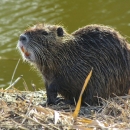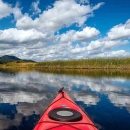This plan will serve as a framework to facilitate quick and effective management response to reports of invasive mussels or snails across Alaska. Rapid response refers specifically to urgent actions taken to eradicate founding populations while these populations are still isolated (Department of the Interior 2016). However, in some cases, rapid eradication may not be possible, and rapid response actions may also include urgent actions taken to limit the spread of isolated populations of these invasive species invasive species
An invasive species is any plant or animal that has spread or been introduced into a new area where they are, or could, cause harm to the environment, economy, or human, animal, or plant health. Their unwelcome presence can destroy ecosystems and cost millions of dollars.
Learn more about invasive species . This document primarily references the mollusks species: Dreissena sp. and New Zealand mudsnails, which are thought to be the most likely to invade Alaska waters. However these steps are relevant to responding to any invasive aquatic mussel or snail species detected in Alaska. The goal of this document is to consolidate information and facilitate communication within the US Fish and Wildlife Service, as well as among partners. Some actions outlined in this document are specific to the USFWS and may not be relevant for other agencies or organizations. However, the specific tasks outlined within each step can be modified to reflect the mandates, authorities, and jurisdictions of other agencies or organizations.
Publication date
Type of document
Guidance
Plan
Facility
Program
Species
Ecosystem
FWS and DOI Region(s)






